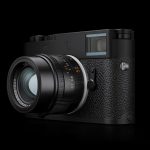 Low light situations are a pain, but
Low light situations are a pain, but
Canon’s new video sensor is made to solve that. The company has
created a full-frame 35mm sensor that can shoot HD video in places
with just 0.03 lux of illumination. Canon says that this is the point
where the human eye has trouble distinguishing objects, and that this
camera is up to the task of delivering high quality video in near
darkness.
In order to do this, Canon took a page
out of HTC’s playbook and lowered the pixel count. The sensor offers up
just 2-megapixels, but each of those pixels is around 7.5 times
larger than those found on modern sensors. That’s not all there is to it though – Canon has specially
engineered hardware as well as software alogarithms in order to
provide the best low light performance possible.
See the official press release, along with a photo of the prototype camera sporting this new sensor, below. You can see some actual footage from the sensor by clicking here.
![]()

TOKYO, March 4, 2013–Canon Inc. announced today that the company has
successfully developed a high-sensitivity 35 mm full-frame CMOS sensor
exclusively for video recording.
Delivering high-sensitivity, low-noise imaging performance, the new
Canon 35 mm CMOS sensor*1 enables the capture of Full HD video even in exceptionally low-light environments.
The newly developed CMOS sensor features pixels measuring 19 microns
square in size, which is more than 7.5-times the surface area of the
pixels on the CMOS sensor incorporated in Canon’s top-of-the-line EOS-1D
X and other digital SLR cameras.
In addition, the sensor’s pixels and readout circuitry employ new
technologies that reduce noise, which tends to increase as pixel size
increases.
Thanks to these technologies, the sensor facilitates the shooting of
clearly visible video images even in dimly lit environments with as
little as 0.03 lux of illumination, or approximately the brightness of a
crescent moon–a level of brightness in which it is difficult for the
naked eye to perceive objects.
When recording video of astral bodies, while an electron-multiplying
CCD,*2 which realizes approximately the same
level of perception as the naked eye, can capture magnitude-6 stars, Canon’s
newly developed CMOS sensor is capable of recording faint stars with a magnitude of 8.5 and above.*3
Using a prototype camera employing the newly developed sensor, Canon successfully captured a wide range of test video,*4
such as footage recorded in a room illuminated only by the light from
burning incense sticks (approximately 0.05-0.01 lux) and video of the
Geminid meteor shower.
The company is looking to such future applications for the new sensor as
astronomical and natural observation, support for medical research, and
use in surveillance and security equipment.
Through the further development of innovative CMOS sensors, Canon aims
to expand the world of new imaging expression.
Canon Marketing Japan Inc. will be exhibiting a prototype camera that
incorporates the newly developed 35 mm full-frame CMOS sensor and sample
footage captured with the camera at SECURITY SHOW 2013
(www.shopbiz.jp/en/ss/), which will be held from Tuesday, March 5, to
Friday, March 8, at the
Tokyo International Exhibition Center in Tokyo, Japan.
- *1
- An imaging element (aspect ratio: 16:9) that supports
the largest image circle size possible when shooting with a Canon EF
lens.
- *2
- A CCD sensor with a readout mechanism that multiplies electrons after being converted from light.
Applications include nighttime surveillance and the capture of astral bodies and nighttime nature scenes.
- *3
- The brightness of a star decreases 2.5-times with each 1 magnitude increase.
- *4
- Recording of test video footage was made possible through cooperation from ZERO Corporation.







